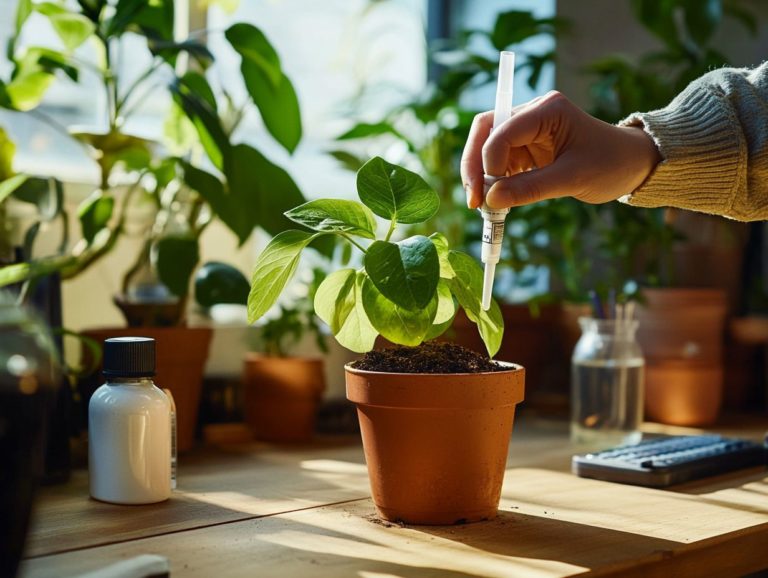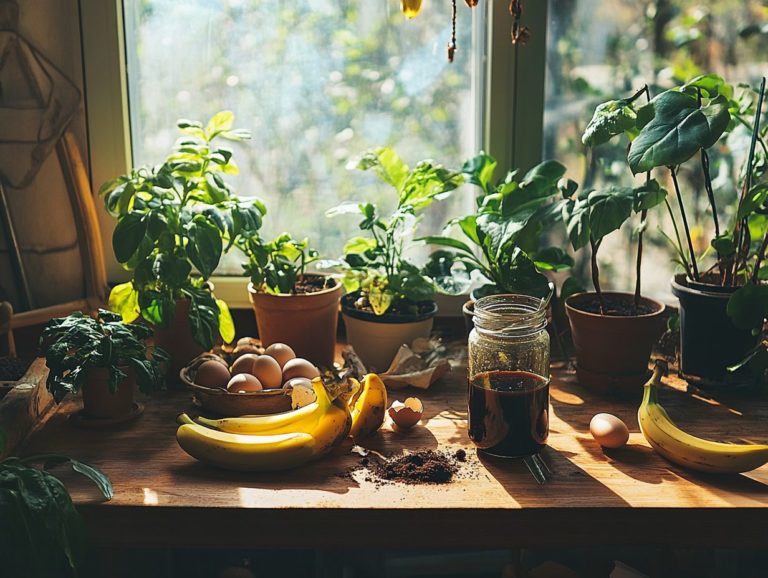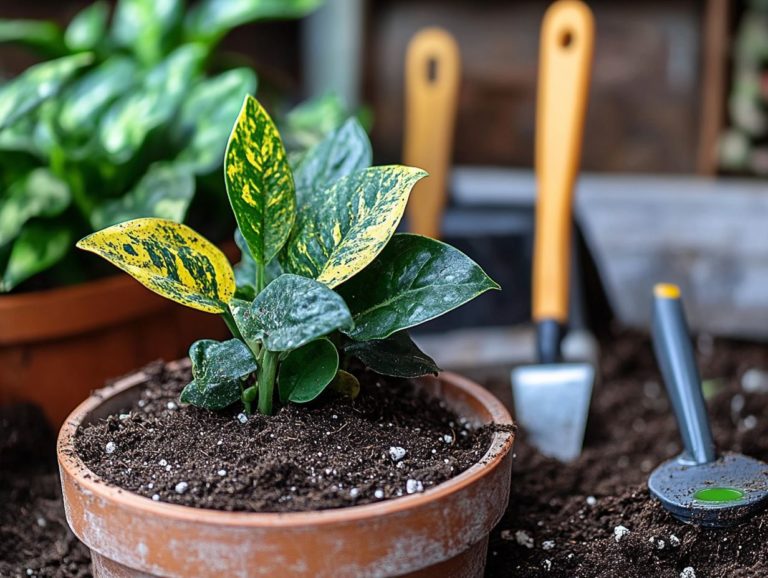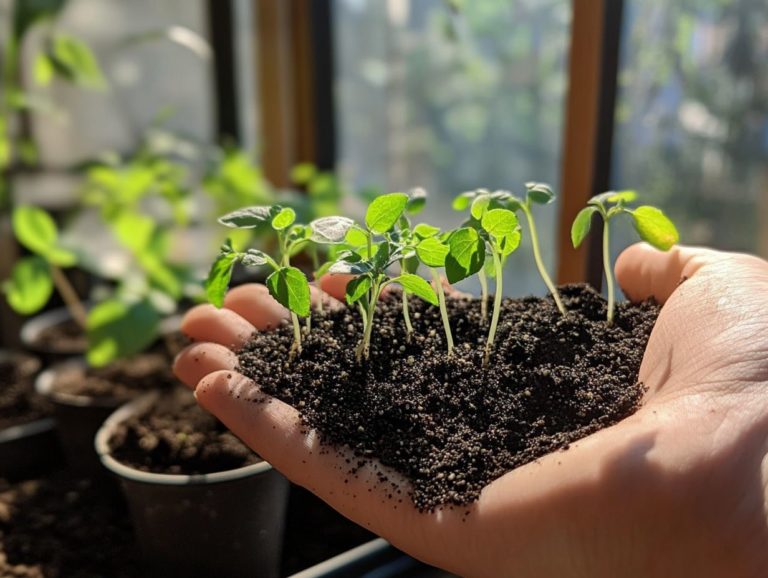10 Common Indoor Plant Soil Myths Debunked
Indoor gardening presents a unique blend of rewards and challenges, particularly when it comes to grasping the essential soil requirements for your plants.
Misinformation frequently breeds misconceptions about proper plant care. This article aims to debunk ten common myths regarding indoor plant soil, such as the notion that all plants flourish in the same type of soil or that reusing old soil poses no risks.
Equipped with these truths, you ll be empowered to nurture your indoor greenery with confidence and expertise.
- Key Takeaways:
- 1. Myth: All Plants Need the Same Type of Soil
- 2. Myth: Adding Rocks or Pebbles to the Bottom of the Pot Improves Drainage
- 3. Myth: Coffee Grounds Are Great for Plants
- 4. Myth: Fertilizing Is Necessary for All Plants
- 5. Myth: Plants Need a Lot of Water to Thrive
- 6. Myth: All Plants Need Direct Sunlight
- 7. Myth: Using Potting Soil Is Enough for Indoor Plants
- 8. Myth: Reusing Old Soil Is Fine for New Plants
- 9. Myth: Adding Sand to Soil Improves Drainage
- 10. Myth: All Indoor Plants Need to Be Repotted Regularly
- How to Properly Care for Indoor Plants
- What Are the Essential Elements for Healthy Plant Growth?
- What Are Some Common Mistakes People Make When It Comes to Indoor Plant Soil?
- What Are Some Signs That a Plant Needs to Be Repotted?
- How Can You Create the Perfect Soil for Your Indoor Plants?
- What Are Some Alternative Soil Options for Indoor Plants?
- Frequently Asked Questions
- Don’t risk your plants; research their specific soil needs now!
- Adding rocks or pebbles to the bottom of a pot does not improve drainage. In fact, it can lead to waterlogging and root rot.
- Coffee grounds may not be beneficial for plants and can actually hinder growth due to their high acidity.
Contents
Key Takeaways:
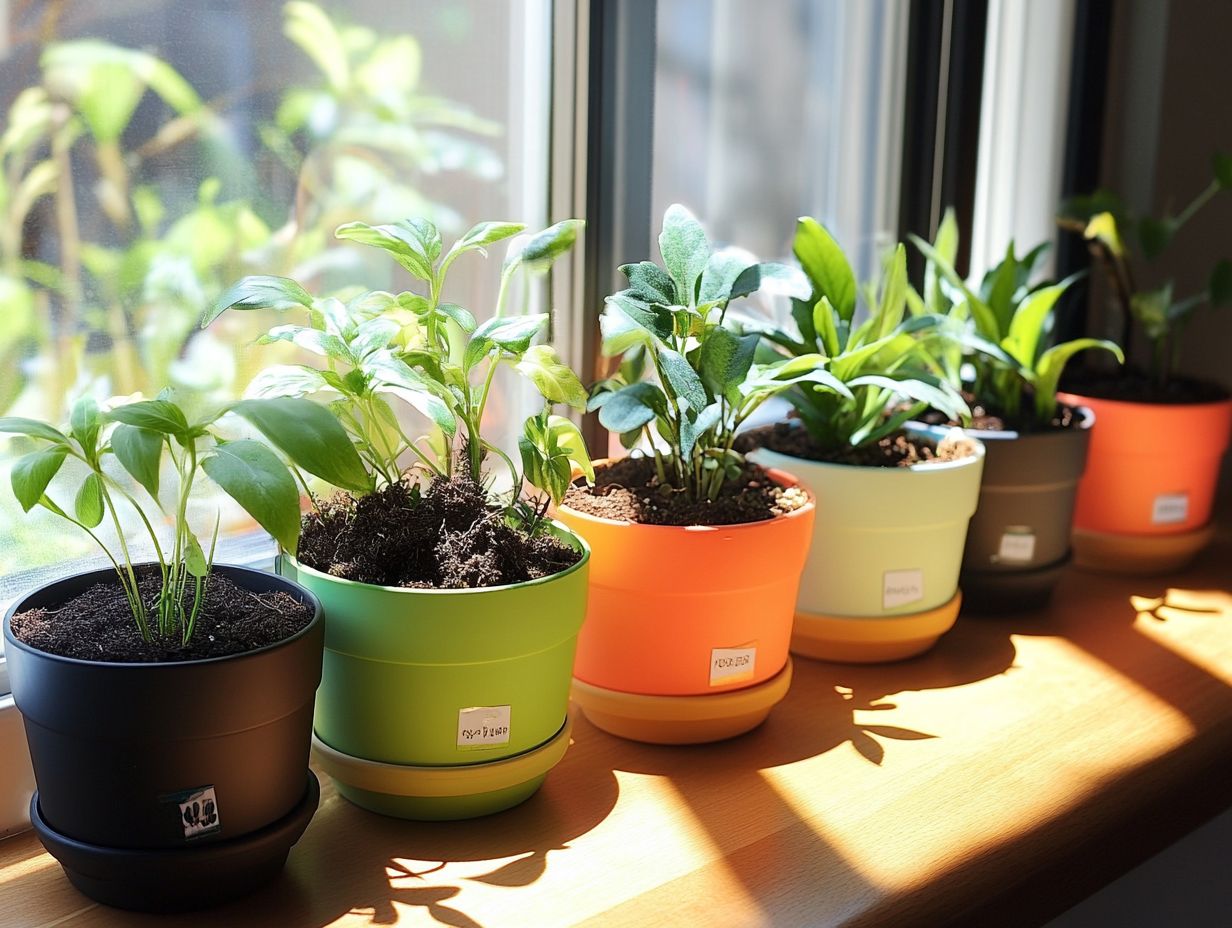
1. Myth: All Plants Need the Same Type of Soil
Many indoor gardening enthusiasts often think that all houseplants can thrive in the same soil mix, but this misconception ignores the unique soil requirements that are vital for the health and growth of different species. Each plant, whether it s a succulent like Crassula ovata or a Ficus, has specific needs influenced by its environment and moisture levels. You need to customize the soil for each type for optimal care.
For example, succulents need a well-draining soil mix to prevent root rot, while moisture-loving plants thrive in soil that holds moisture well. Expert Robert Pavlis points out that grasping these specific needs can significantly enhance your plants’ vitality; the right combination of organic matter, grit, and nutrients is crucial for healthy root development.
A common fallacy is that any commercial potting mix will do the trick, but this can lead to nutrient deficiencies or excessive water retention. By tailoring soil components to meet the preferences of each plant, you can cultivate a thriving indoor environment that truly flourishes with the best practices for indoor plant soil care.
2. Myth: Adding Rocks or Pebbles to the Bottom of the Pot Improves Drainage
A common myth in indoor gardening persists: the notion that placing rocks or pebbles at the bottom of a pot improves drainage. In reality, this practice can lead to inadequate moisture retention and jeopardize root health.
Horticultural experts clarify that this approach creates a ‘perched water table‘ effect, which means that water builds up above the pebbles, leading to soggy roots. As a result, roots may end up sitting in waterlogged soil, paving the way for root rot and a host of related issues.
Consider using well-draining soil mixes designed for optimal moisture control. By grasping the scientific principles behind soil composition, you can dispel these widespread misconceptions and cultivate healthier plants.
Many gardening enthusiasts achieve success by incorporating perlite or vermiculite into their potting mix. These additives promote adequate drainage while retaining essential moisture, ultimately supporting vibrant plant health.
3. Myth: Coffee Grounds Are Great for Plants
While coffee grounds are often hailed as a miracle additive for indoor plants, this notion overlooks the reality of their nutrient composition and potential acidity, which can adversely affect certain plant species, especially those that are sensitive.
It s essential to move past the hype and recognize that coffee grounds do contain nitrogen, beneficial for plants that thrive in nutrient-rich settings, such as vegetables and some flowering houseplants. However, the organic matter can also shift the soil’s pH level, making it more acidic something that may not sit well with plants like succulents and others that prefer neutral or alkaline environments.
Many gardening enthusiasts fall into the trap of believing that all plants will thrive with coffee grounds, but it s vital to align with the specific nutrient needs of each plant. For those interested in boosting community gardens or outdoor beds, coffee grounds can indeed enhance overall soil health. Just remember to exercise caution when using them indoors to avoid any unwanted surprises.
Start your indoor garden the right way by choosing the best soil for your plants!
4. Myth: Fertilizing Is Necessary for All Plants
Many believe that all plants need regular fertilization to thrive. However, this idea overlooks the different nutrient needs of various species. Over-fertilizing your indoor plants can be more damaging than beneficial.
Each plant type has specific needs. Indoor varieties like succulents thrive with minimal external nutrients. These resilient plants can do well in poor soil and usually require fertilizer only during their active growing season.
To know when to fertilize, observe your plant’s growth patterns and overall health. Signs like yellowing leaves or stunted growth may indicate a lack of nutrients.
Choosing the right fertilizer is crucial. It should match the specific species and its unique requirements. Opt for organic options or specialized formulations for the best results, ensuring a balanced supply of essential nutrients without overwhelming your plants.
5. Myth: Plants Need a Lot of Water to Thrive
The belief that all plants require copious amounts of water is a widespread myth. In reality, excessive watering can lead to problems like overwatering and root rot (a condition where roots decay due to excess moisture), which can harm your plants, especially those that thrive in drier conditions.
Understanding the specific moisture requirements of your indoor plants is essential for a flourishing indoor garden. For instance, tropical plants often thrive in higher humidity and warmer temperatures, needing more frequent watering. Succulents and cacti prefer dry conditions and can suffer from overwatering.
Indoor factors like room temperature and light exposure greatly influence how quickly the soil dries out. Familiarizing yourself with each plant type’s unique needs will boost their health and allow you to adjust your watering practices accordingly. By addressing issues with soil, such as those detailed in the article 5 common indoor plant soil problems solved, you can create a vibrant indoor environment.
6. Myth: All Plants Need Direct Sunlight
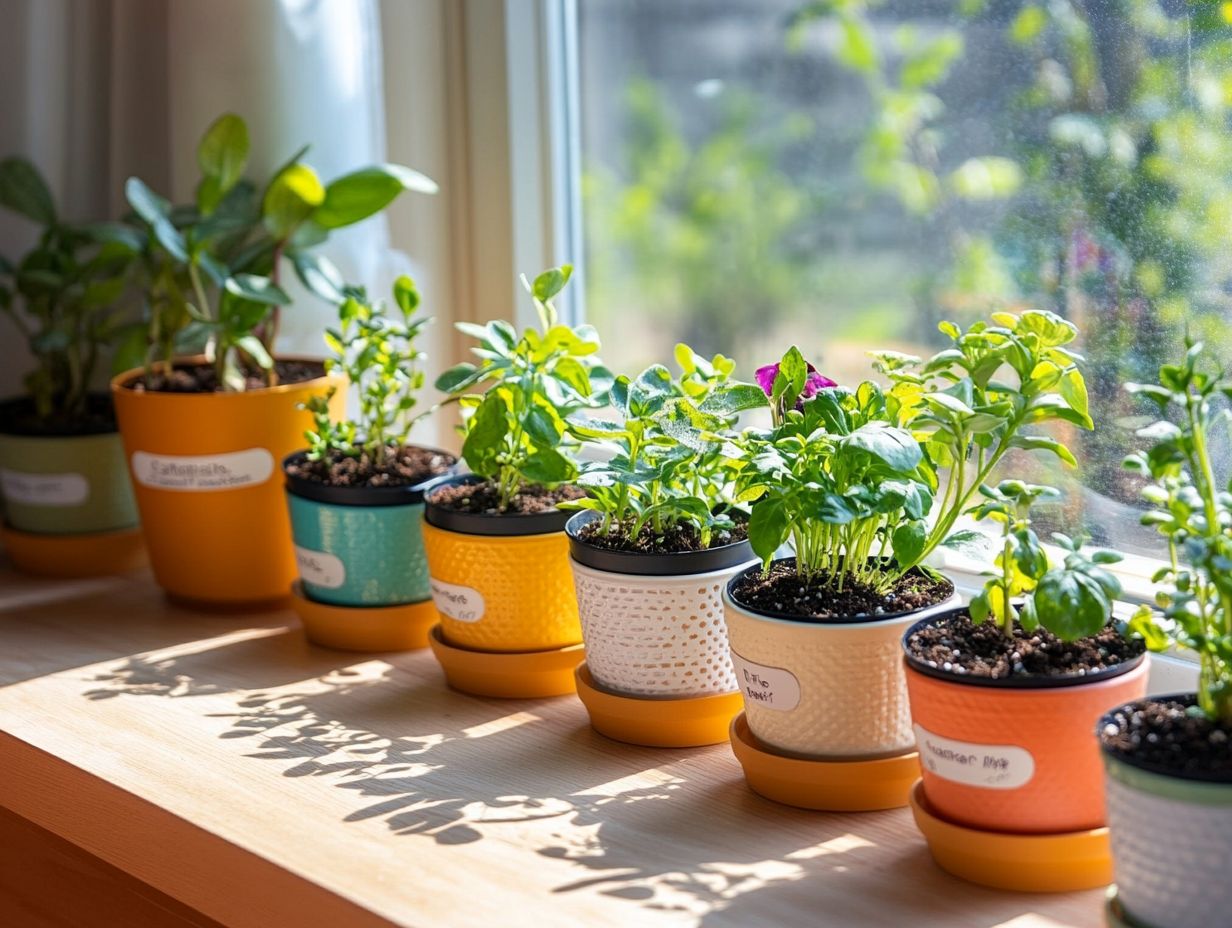
Some indoor plants crave abundant direct sunlight, but this overlooks the unique light needs of various species. Mismanaged light exposure can harm plants that thrive in indirect or low light conditions.
Understanding these nuances is vital for any indoor gardener. For example, the ZZ Plant thrives in dimly lit corners, while certain Ficus varieties adapt beautifully to such settings. Additionally, being aware of common misconceptions can help you care for your plants better; check out the top 7 indoor plant pest myths debunked for more insights.
To assess light conditions effectively, pay attention to how sunlight filters into your space throughout the day. Note which areas bask in consistent indirect light and which remain in shadow. Adjusting your plants’ placement ensures they receive just the right amount of light, avoiding the dreaded fate of scorched leaves.
Thoughtful positioning nurtures growth and enhances the aesthetic of your living spaces, turning them into serene green sanctuaries.
7. Myth: Using Potting Soil Is Enough for Indoor Plants
The belief that standard potting soil works for all indoor plants can lead to inadequate nutrient delivery and poor plant health. Each plant species has unique soil requirements that often extend beyond basic potting mixes.
Understanding these specific needs is essential if you aim to cultivate a thriving indoor garden. For example, succulents and cacti flourish in well-draining soil made from sand, perlite, and organic matter, preventing root rot. To address common soil issues affecting indoor plants, tropical plants thrive in richer, moisture-retentive blends that mimic their natural environments.
By customizing your soil mixes to cater to each species’ hydration and nutrient needs, you can significantly boost their growth potential and resilience. Don’t overlook exciting alternatives like coconut coir or specialty peat-based mixtures; for more insights, check out these 10 tips for maintaining indoor plant soil, as they can elevate standard potting soil, creating an optimal environment for various plants.
8. Myth: Reusing Old Soil Is Fine for New Plants
Reusing old soil for new plants is a common misconception. It can lead to nutrient deficiencies and pest problems!
The original soil might be depleted and harbor pathogens that harm plant health. Understanding the importance of fresh soil is essential for ensuring robust growth and vitality in your garden. Fresh soil provides vital nutrients and enhances drainage and aeration key factors for healthy roots.
Before considering reusing old soil, assess its viability. Look for signs it may no longer support healthy plant growth, such as:
- A foul odor
- Compaction that inhibits drainage (compaction means the soil has become dense and hard, making it difficult for water to flow through)
- Visible signs of pests and diseases
If you decide to prepare old soil, mixing it with compost can work wonders. This helps restore its structure and nutrient content, creating a healthier environment for your new plants to thrive.
9. Myth: Adding Sand to Soil Improves Drainage
The idea that simply adding sand to soil will enhance drainage is misleading; it can lead to a compact layer that blocks moisture movement, jeopardizing plant health.
This happens because, although sand has larger particles than clay and silt, it can create a solid matrix if not mixed properly. As sand particles settle, they may form a dense layer that traps water instead of allowing it to flow.
To achieve optimal drainage, combine sand with organic matter, like compost or peat (peat is a type of organic material that helps retain moisture). Introducing materials like perlite or vermiculite into the mix can significantly improve drainage properties.
Regularly testing your soil composition with a moisture meter will help you understand its drainage capacity and guide necessary amendments for promoting healthier plant growth.
10. Myth: All Indoor Plants Need to Be Repotted Regularly
The idea that all indoor plants require frequent repotting overlooks the unique growth patterns and space needs of different species. This can cause unnecessary stress and potential damage to plants that don t benefit from such frequent changes.
Understanding when repotting is genuinely necessary can greatly enhance the health of your indoor garden. Typically, signs like roots poking out from drainage holes, stunted growth, or yellowing leaves indicate that a plant has outgrown its pot. Experts recommend regular inspections, especially during the growing season, to check if repotting is needed.
If your plants are thriving without distress, they can comfortably remain in their current containers for extended periods. To ensure a smooth repotting process, choose a pot that is only slightly larger and use fresh, appropriate potting mix to promote healthy root development. With the right approach, your plants can continue to thrive in their new environment!
How to Properly Care for Indoor Plants
Caring for indoor plants requires understanding their specific needs, including the right balance of light, moisture, humidity, and soil conditions factors that can vary significantly among different species and greatly influence their health and growth.
Each plant species flourishes under unique conditions, making it essential to familiarize yourself with the specific requirements of your green companions. For example, while some plants thrive in bright, indirect light, others prefer a shadier nook. Watering practices also vary; overwatering can lead to root rot, while underwatering can stunt growth. Additionally, it’s important to debunk some common myths about indoor plant soil. Maintaining adequate humidity levels is crucial, especially for tropical plants that crave a more humid atmosphere.
Using the appropriate type of soil is vital, as it allows plants to absorb nutrients effectively, setting the stage for vibrant growth. By closely monitoring these factors and adjusting your care routines, you can create an ideal environment for your indoor greenery to truly thrive!
What Are the Essential Elements for Healthy Plant Growth?
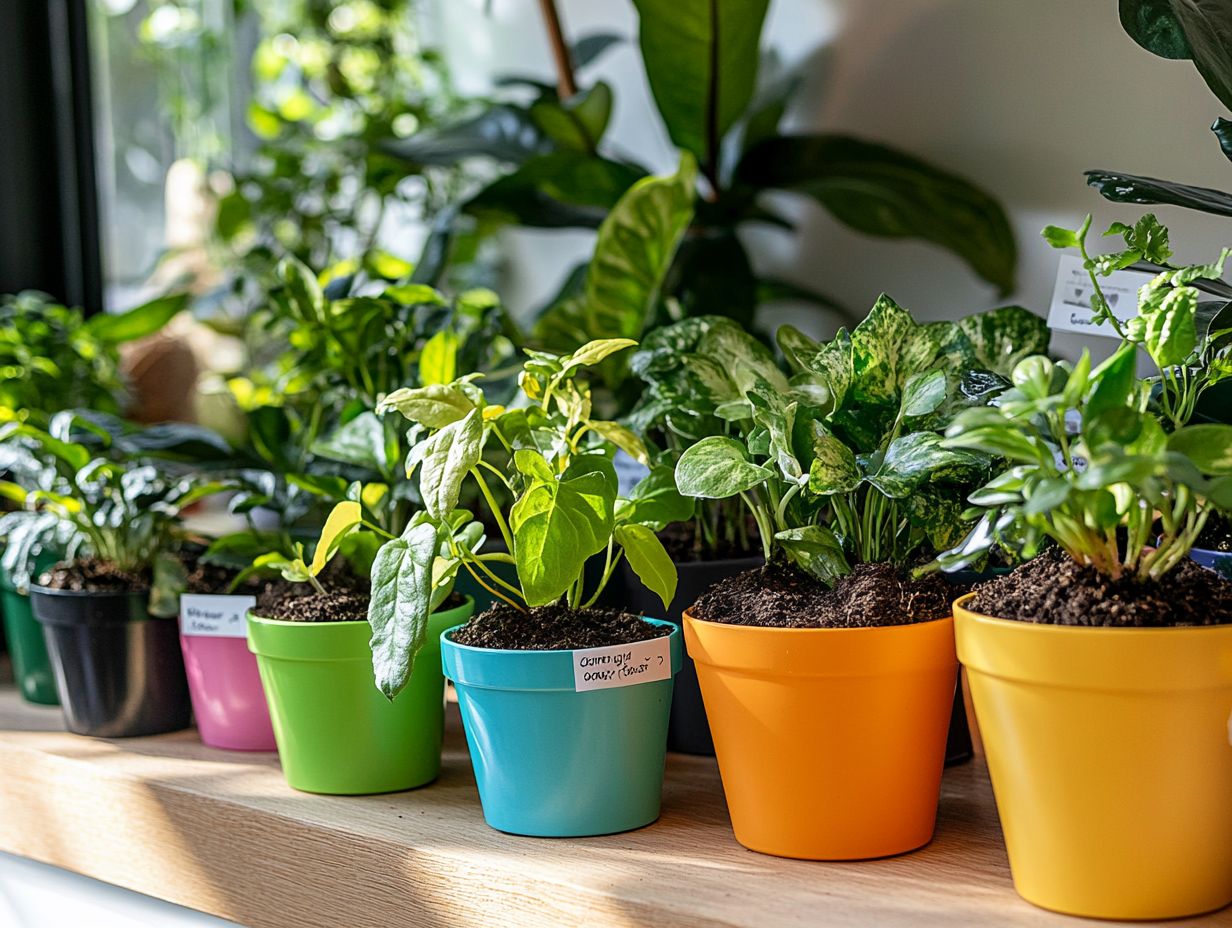
The essential elements for healthy plant growth include a balanced mix of light, nutrients, soil quality, air circulation, temperature, and humidity. Each plays a vital role in the overall health of your indoor plants.
Consider how these factors work together: Light intensity and duration directly impact photosynthesis. This process is crucial for energy production.
An adequate supply of nutrients like nitrogen, phosphorus, and potassium fosters robust growth and beautiful blooms. Soil quality, with optimal drainage and pH levels, supports healthy root systems, while proper air circulation helps ward off mold and pest problems.
Maintaining suitable temperature ranges is key for plant functions. Don t underestimate the importance of humidity for effective transpiration. For instance, a snake plant thrives in lower light and drier conditions, while ferns flourish in higher humidity and brighter indirect light.
By understanding these variables, you can craft a thriving environment tailored to the specific needs of various plant species. This ensures they reach their full potential and can adapt to home conditions.
What Are Some Common Mistakes People Make When It Comes to Indoor Plant Soil?
Many indoor gardeners often stumble into common pitfalls when it comes to soil usage. Using the wrong type of soil, overlooking drainage considerations, or neglecting to replenish nutrients can significantly impact the health and growth of your plants.
These missteps can lead to problems such as inadequate root development, waterlogged conditions, or nutrient deficiencies. These issues ultimately result in plant diseases that can stifle the growth of your cherished greenery.
Choosing the right soil is your first step toward a thriving indoor garden! It’s crucial to select well-draining soil that suits the specific needs of your plants. To avoid common misconceptions, be sure to read about the 5 watering myths about indoor plants. Ensure proper drainage with holes at the bottom of your pots, and regularly refresh organic matter to keep nutrient levels in check.
Consulting with seasoned gardeners can offer tailored advice for your setup. This guidance helps you create a vibrant green oasis that flourishes just as you envisioned with proper air purification techniques.
What Are Some Signs That a Plant Needs to Be Repotted?
Recognizing the signs that indicate your plant needs repotting is crucial for maintaining its health. Look out for stunted growth, root circulation issues, and cramped conditions within the container.
Yellowing leaves or an increase in watering frequency can be clear indicators that it s time for a change. To accurately assess root health, gently remove your plant from its pot and examine the roots for signs of rot or tight coiling both signals that it s time for a larger home.
Pay attention to soil quality as well; compacted or depleted soil that doesn t retain moisture effectively can be a red flag.
When it’s time to repot, using fresh, well-draining soil is essential. Choose an appropriately sized pot and minimize root disturbance to reduce stress on your plant.
Don t wait too long your plant is counting on you!
How Can You Create the Perfect Soil for Your Indoor Plants?
Creating the perfect soil for your indoor plants starts with a deep understanding of their unique needs regarding drainage, moisture retention, and nutrients. This knowledge allows you to craft a customized blend that will nurture healthy growth and vibrant vitality.
Your ideal soil mix should include organic materials like compost and peat moss. These enhance moisture retention and supply essential nutrients.
Complement these with inorganic components such as perlite or vermiculite to boost aeration and drainage.
Remember, different plant species have distinct preferences; some thrive in lush, humid environments, while others favor drier conditions. For example, succulents and cacti prefer a gravelly mix that drains rapidly, whereas ferns are happier in a moisture-retentive blend. To optimize your indoor plants’ health, consider these 5 essential soil care tips.
Expert advice recommends testing the pH and adjusting your mix according to the specific preferences of your plants for optimal growth. This attention to detail will make all the difference in cultivating a thriving indoor garden.
What Are Some Alternative Soil Options for Indoor Plants?
Alternative soil options can greatly benefit your indoor plants. They provide specific solutions that cater to various species’ needs.
Coconut coir is a standout choice. This sustainable option retains moisture and promotes aeration, making it ideal for many tropical plants. However, it can be a bit alkaline, which isn’t suitable for every variety.
Peat moss is famous for retaining moisture. It’s often found in potting mixes, but its extraction raises environmental concerns.
If convenience is key, consider commercial mixes. These are formulated for specific plant types and offer balanced nutrients. Just be cautious, as their quality can differ and some may include synthetic additives.
Frequently Asked Questions
What are some common indoor plant soil myths?
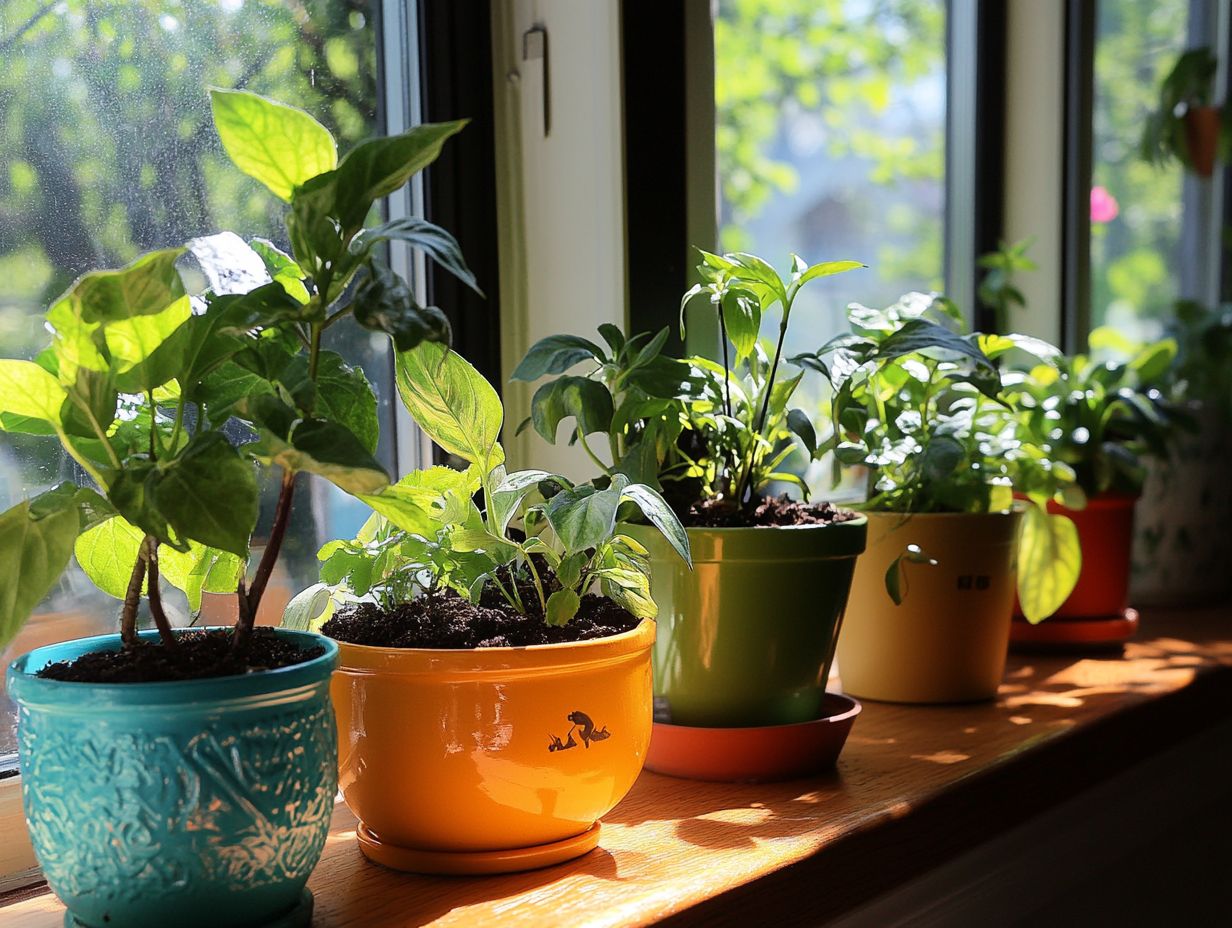
Many believe coffee grounds fertilize plants, that adding rocks improves drainage, or that all plants need the same soil. These are myths!
Do coffee grounds really act as fertilizer?
No, coffee grounds can harm plants by making soil too acidic. Compost them first for better results.
Is adding rocks for drainage necessary?
No, rocks can trap water and prevent it from reaching roots. Use potting mixes designed for indoor plants instead.
Do all plants need the same soil?
No, different plants have unique soil needs. Research each plant to find the right soil.
Is annual soil replacement necessary?
No, if the soil is in good condition, you can reuse it. However, repotting every 1-2 years helps replenish nutrients.
Can you use garden soil indoors?
No, garden soil may contain pests and diseases. Always use potting mix for indoor plants.

